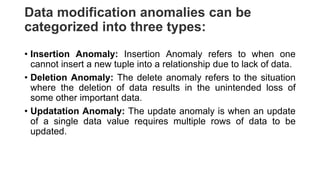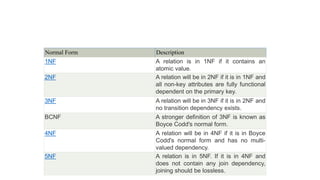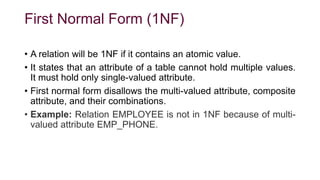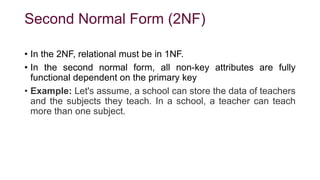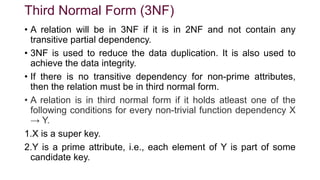Normalization is a process of organizing data in a database to minimize redundancy and eliminate undesirable anomalies like insertion, update, and deletion anomalies. Various normal forms (1NF, 2NF, 3NF, BCNF, 4NF, 5NF) are defined, each addressing specific types of data dependency and redundancy issues. While normalization promotes data consistency and integrity, it can lead to performance degradation and is time-consuming, particularly at higher normal forms.



